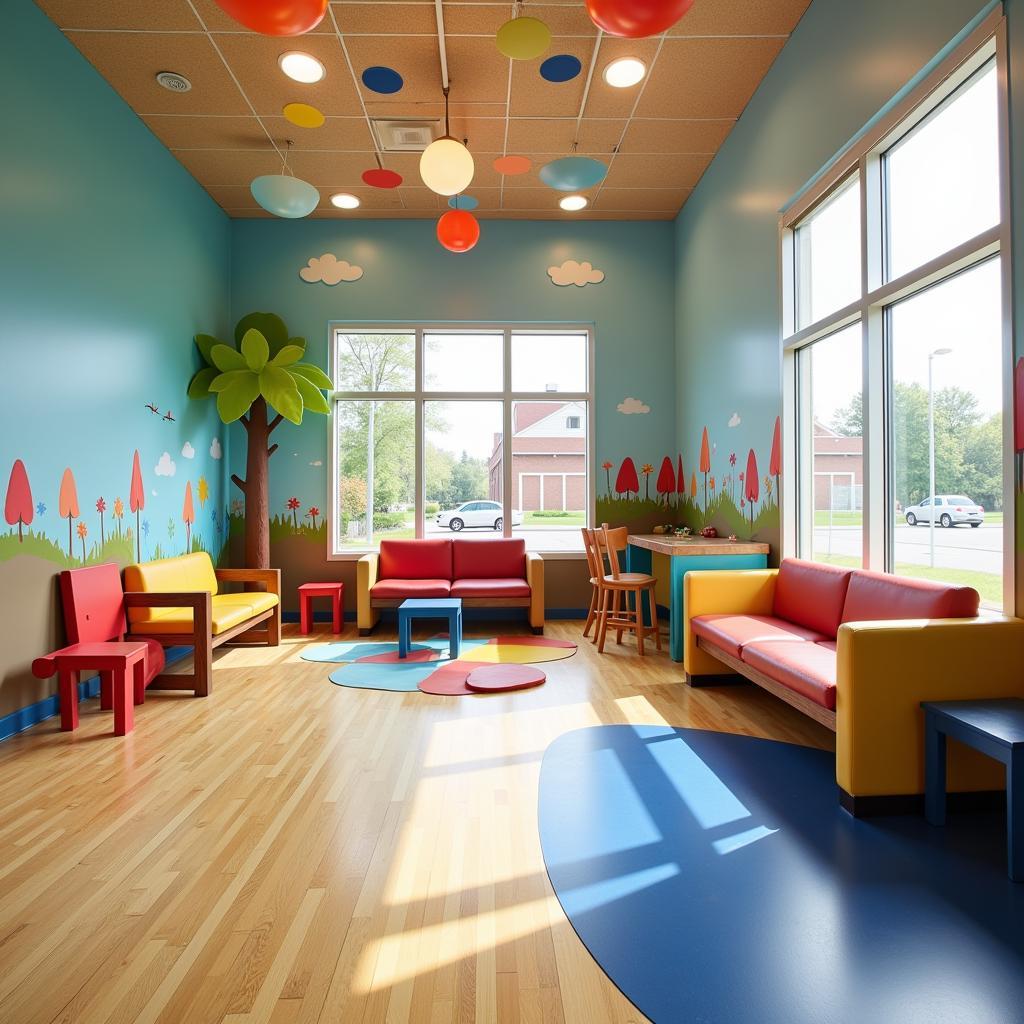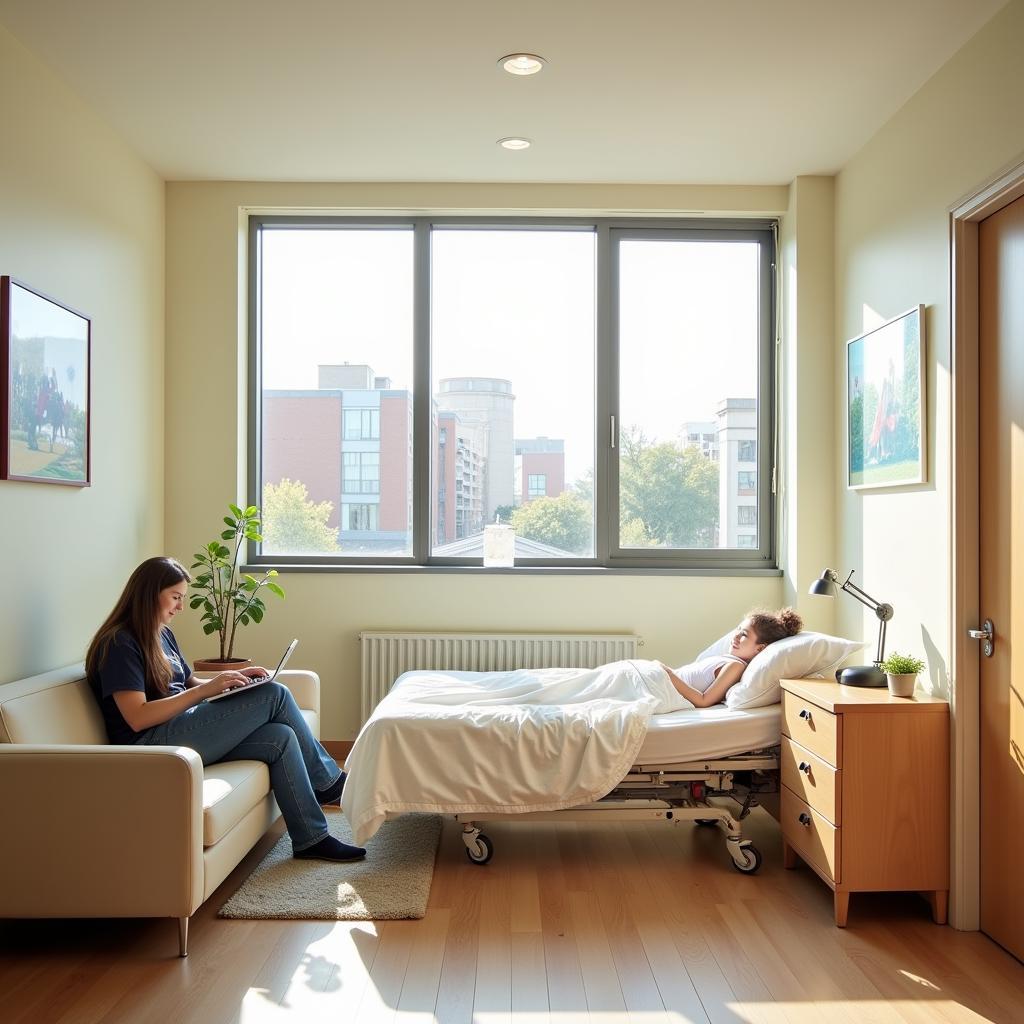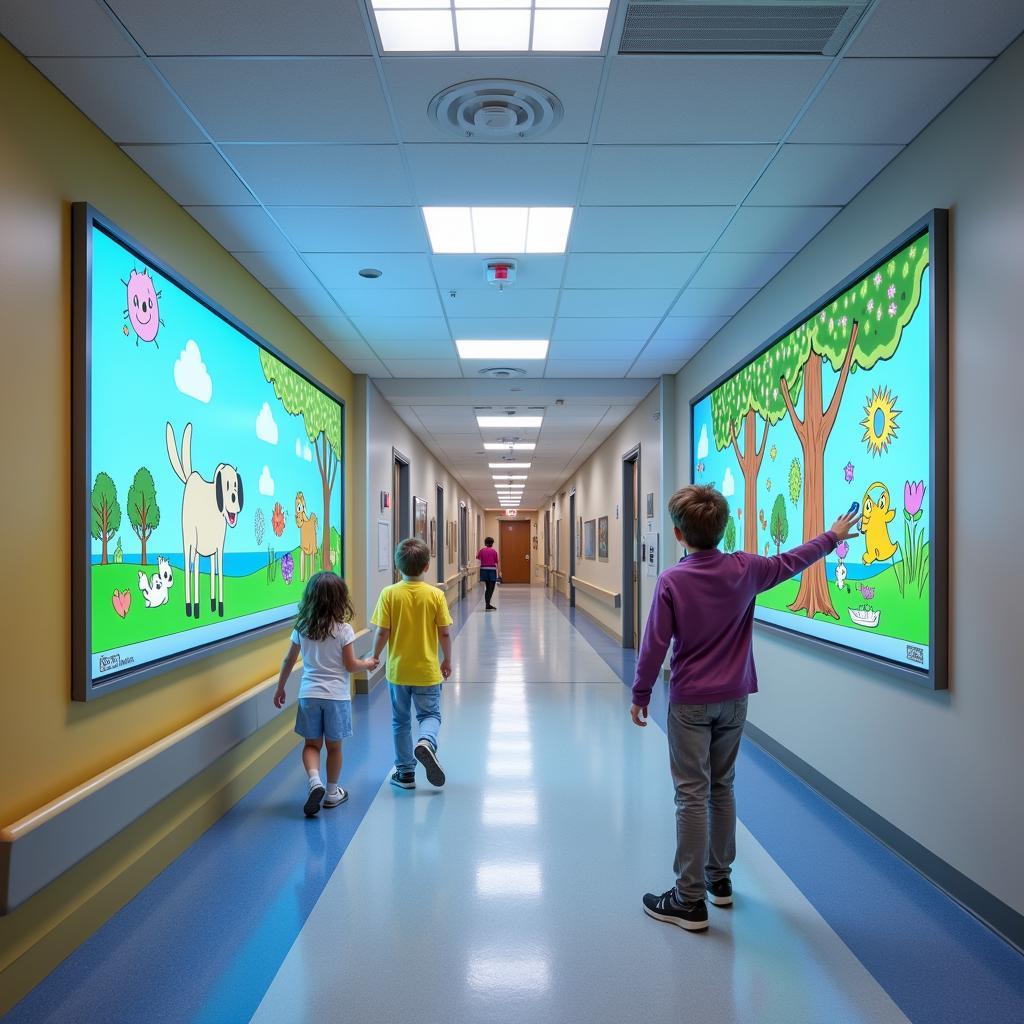The design of a paediatric hospital goes far beyond aesthetics. It’s about creating a space that considers the unique needs and anxieties of children, their families, and the dedicated staff who care for them. Effective Paediatric Hospital Design balances functionality with a playful and comforting environment that promotes healing and reduces stress.
The Impact of Design on Healing
Studies have shown a strong correlation between a hospital’s environment and a patient’s well-being. For children, who are especially sensitive to their surroundings, a well-designed space can contribute significantly to their emotional and physical recovery.
 Bright and engaging waiting area in a children's hospital
Bright and engaging waiting area in a children's hospital
Key elements of successful paediatric hospital design include:
- Reducing anxiety and stress: Familiar and welcoming spaces, such as play areas incorporated into waiting rooms, can help distract children from medical procedures and create a sense of normalcy.
- Enhancing comfort and well-being: Comfortable furniture for both children and their families, access to natural light, and views of nature can create a calming and supportive atmosphere.
- Promoting a sense of control: Giving children choices, even small ones, can empower them in an environment where they may feel a lack of control. This can be as simple as offering options for wall colors in patient rooms or providing interactive technology that allows them to adjust lighting and temperature.
Incorporating Family-Centered Care
Recognizing that families are integral to a child’s healing process is paramount. Family-centered care principles should be woven into the very fabric of the hospital design.
 A comfortable and spacious paediatric hospital room designed for family stays.
A comfortable and spacious paediatric hospital room designed for family stays.
Here’s how design can facilitate family-centered care:
- Comfortable accommodation: Providing comfortable sleeping arrangements for parents or caregivers within the child’s room is essential. This allows families to stay close and provides a sense of security for the child.
- Communal spaces: Dedicated family lounges or playrooms offer respite for families and opportunities for children to socialize and engage in play, fostering a sense of normalcy.
- Clear navigation: Intuitive wayfinding and clear signage reduce stress for families navigating the hospital, allowing them to focus on their child’s well-being.
Creating a Positive and Engaging Environment
Hospitals can be intimidating places for children. A well-considered design approach can transform this perception by incorporating playful and engaging elements that spark curiosity and imagination.
 Children interacting with a colorful, interactive wall in a hospital corridor.
Children interacting with a colorful, interactive wall in a hospital corridor.
Consider these design strategies:
- Themes and storytelling: Incorporating age-appropriate themes throughout the hospital, such as underwater adventures or outer space exploration, can transform clinical spaces into engaging environments.
- Interactive elements: Interactive walls, play areas integrated into waiting rooms, and child-friendly technology can provide distraction and entertainment while also promoting development and learning.
- Art and nature: Incorporating natural elements like plants and water features, along with cheerful artwork created by children or local artists, can create a calming and uplifting atmosphere.
The Future of Paediatric Hospital Design
As we move forward, technology will continue to play a pivotal role in shaping the future of paediatric hospital design. Imagine virtual reality experiences that transport children to calming environments during procedures or interactive apps that allow them to customize their room’s lighting and sounds.
 A child experiencing virtual reality in a hospital setting, wearing a VR headset and smiling.
A child experiencing virtual reality in a hospital setting, wearing a VR headset and smiling.
By embracing innovative design solutions and prioritizing the unique needs of children and their families, we can create paediatric hospitals that are not just places of healing but also beacons of hope, comfort, and joy.